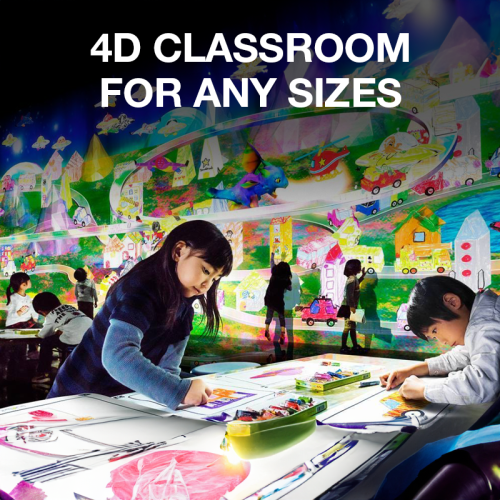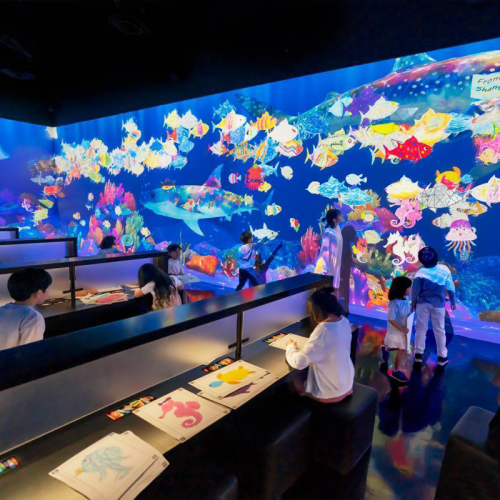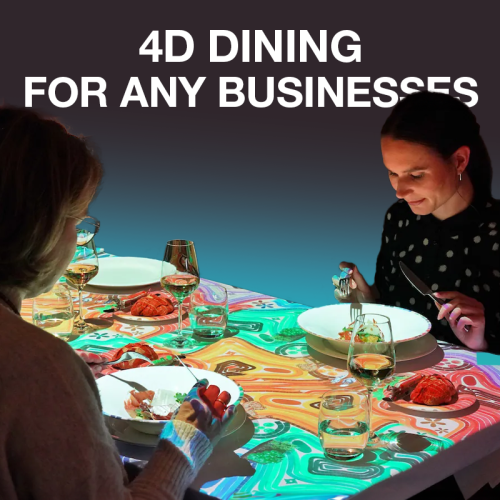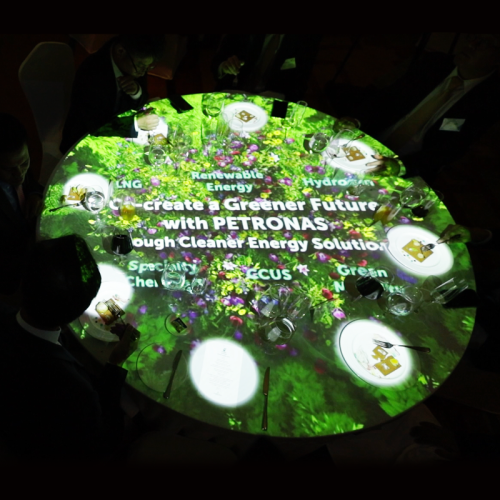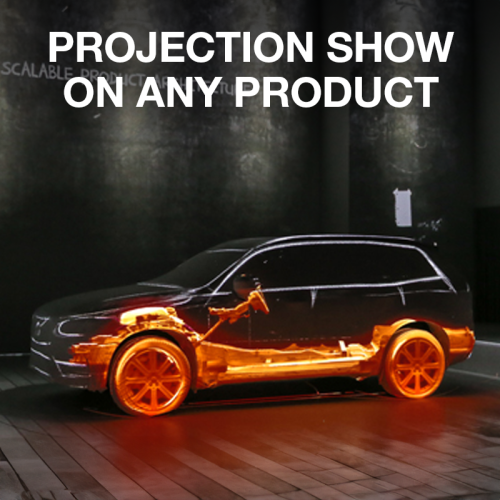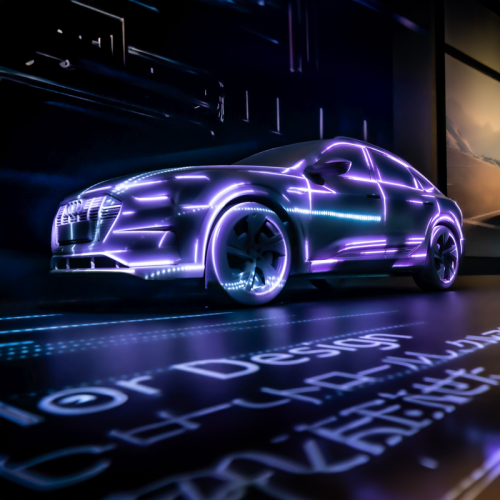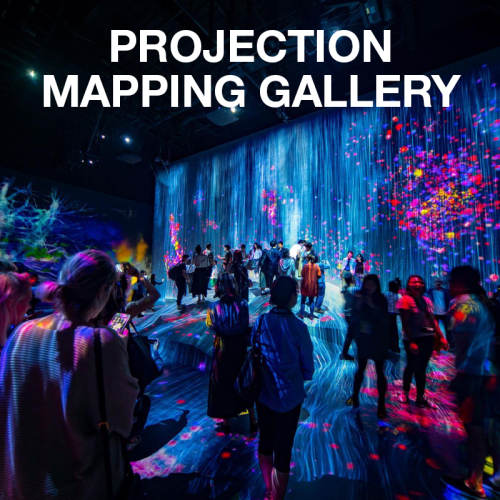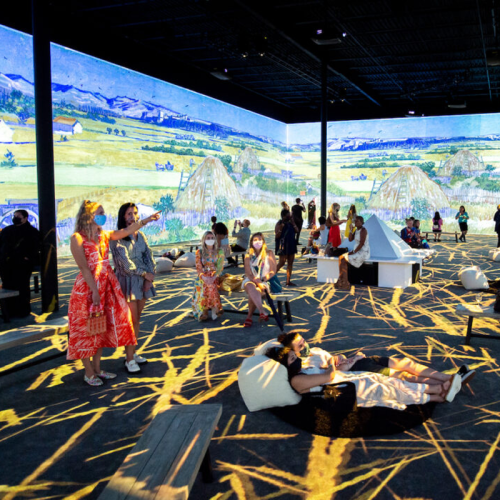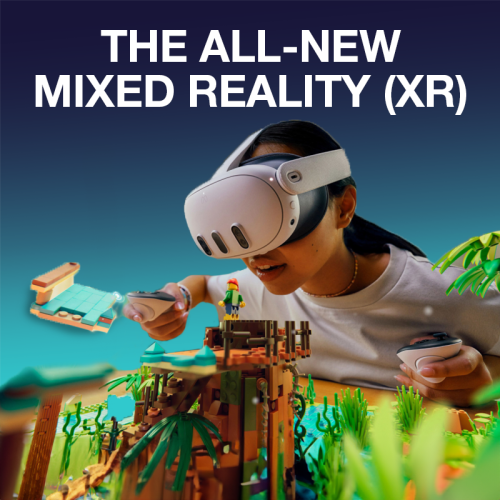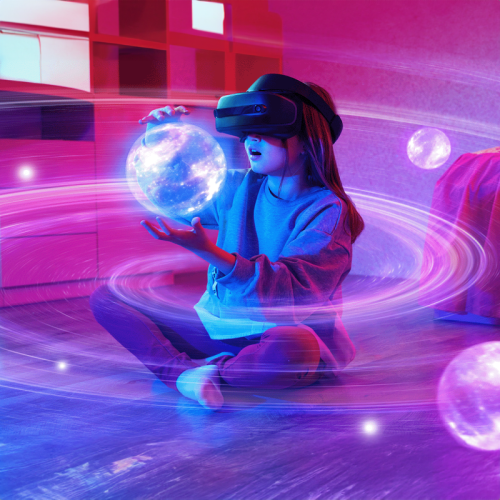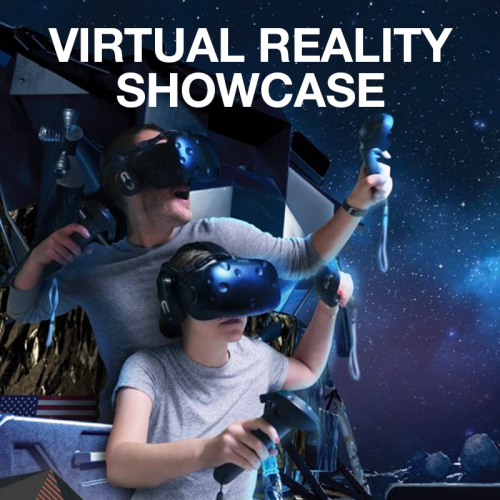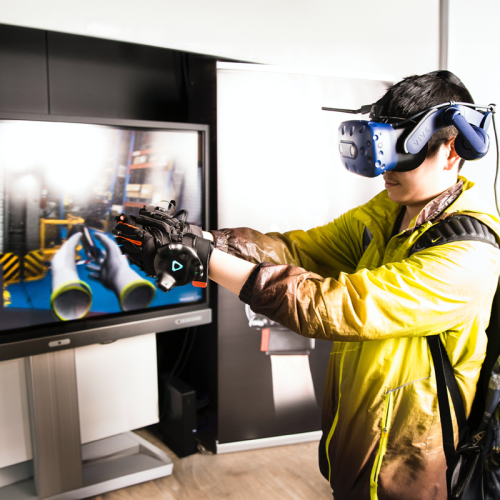Immersive Solutions
4D Classroom
4D Classroom could imply an enhanced or immersive learning environment that goes beyond traditional 3D spaces by incorporating an additional dimension or level of interactivity. In the context of educational technology, it might involve the integration of various technologies to create a dynamic and enriched learning experience.
4D Dining
4D Dining likely suggests an enhanced dining experience that goes beyond the traditional three dimensions (3D) by incorporating an additional dimension or level of sensory immersion. This could involve the integration of various technologies and sensory elements to create a more dynamic and enriched dining experience.
4D Product Showroom
4D Product Showroom could refer to an immersive and interactive space designed to showcase products in a dynamic and multi-sensory environment. The term implies the integration of additional sensory dimensions, beyond traditional audio and visual elements, to enhance the overall product presentation and engage potential customers in a more immersive way.
4D Show
4D show is an entertainment experience that goes beyond the conventional audio-visual aspects, incorporating additional sensory dimensions to create a more immersive and engaging viewer experience. The term often implies the inclusion of elements like motion seats, special effects, scents, and other interactive features that synchronize with the on-screen content.
Mixed Reality Experience
Mixed Reality (MR) in the context of immersive solutions refers to a technology that blends aspects of both virtual reality (VR) and augmented reality (AR) to create a hybrid environment where digital and physical elements coexist and interact in real-time. Mixed Reality enables users to see and interact with virtual objects or information superimposed onto the real world.
Virtual Reality Experience
A Virtual Reality (VR) Experience in the context of immersive solutions involves the use of virtual reality technology to create a computer-generated environment that simulates a realistic and immersive experience for users. VR typically relies on head-mounted displays (HMDs), motion tracking, and interactive elements to transport users to a digitally created world.

